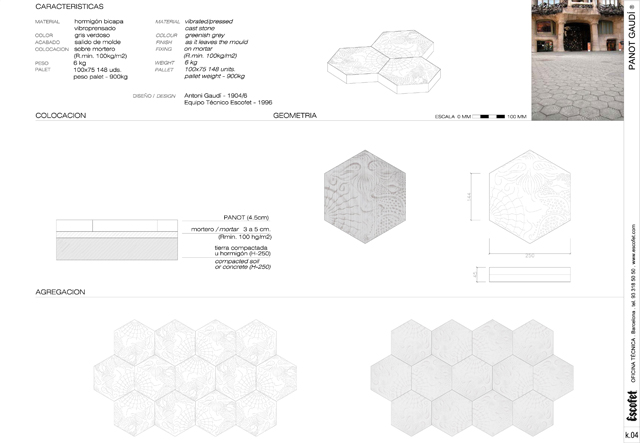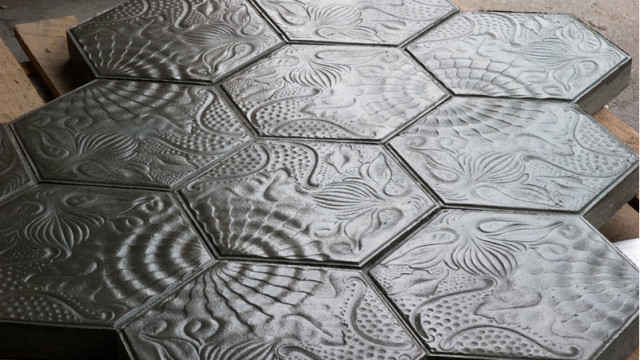Walking up Passeig de Gracia it’s clear that Gaudí certainly left his footprint on this famous design city.
With the landmark buildings of Casa Batlló and La Pedrera focusing attention, some may fail to notice that the streets here are literally paved with (design) gold.
Since 1596 when the Talavera potter Lorenzo de Madrid first produced ceramic tiles for the Government Palace. Catalan tile design & production grew to reach a peak in the Modernista era in the late 19th century.
In recent years Barcelona has fallen back in love with the famous ‘baldosa’. In 1996 Escofet, a historical Barcelona company specialising in urban design, re-introduced ‘Panot Gaudí’ – the original tile designed for the interior of La Pedrera. Using their original molds Escofet manufactured the tiles to pave Passeig de Gracia and the surrounding areas.
Anyone who has walked this famous boulevard will have felt the sense of prestige and historical grandeur, following the footsteps of Gaudí on these dark green hexagonal aquatic mosaics.

However anyone walking Passeig de Gracia in the rain, (and yes unfortunately it does rain in Barcelona – occasionally), will realise why these tiles were originally designed for the interior of La Pedrera. When they turn to green-black ice underfoot and you skate home with your Vinçon shopping bags. Perhaps a valuable design lesson. Not to change the function of a genius’ creation.
The re-birth of this true design classic doesn’t stop at street paving. Many modernista apartment floors, in the early 20th century, where adorned with mosaic Catalan tiles. Salvaging and re-conditioning has forged the current decorative trend seen today in restaurants, bars and even furniture.
Mesa bonita, a locally based artisan shop specialises in individual bespoke furniture pieces, and the results are fantastic. Check out their website at www.mesabonita.es.
With the end result, the tiles returning to their rightful place – on the floors and decoration in apartments and houses of Barcelona. Where 21st century design integrates seamlessly with the history and back-story of the modernista era.
(See below for some examples Studio P10 are currently working with).
* Images and technical drawings of ‘Panot Gaudi’ taken from www.escofet.com











